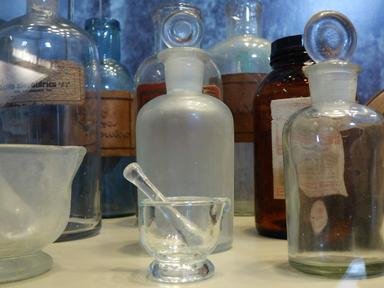Quiz Answer Key and Fun Facts
1. A certain planet in our solar system, composed of methane and known for its Great Dark Spot, was first observed by Johann Galle and predicted by Urbain Le Verrier. This planet, which has a trident as its symbol, is at the center of rumours that it will crash with its largest satellite. If you were able to identify the planet, can you tell me: which element in the Periodic Table has it given its name to?
2. A scientist from Italy has had a category of subatomic particles named after him. His first name is Enrico and he also has an element named after him. Identify this element, which is also the element with atomic number 100.
3. Chemical elements have been named for various sources, including universities, villages and even goblins supposed to haunt their mines. Which of the following element has not been named after an actual country?
4. In a nuclear fission reaction, uranium-235, the only naturally occurring fissile isotope of the element uranium, absorbs a neutron and breaks down to form atoms of two new elements, barium and a certain noble gas. Name this gas, whose name also matches the name of the native planet of Superman.
5. The symbol for a particular element is derived from its Latin name, stibium. Its name is also believed to have come from various words and phrases, such as those meaning 'opposed to solitude' because it was believed to hardly ever occur in the pure state and 'monk-killer' due to the fact that monks too were alchemists and this element is of a poisonous nature. Can you name this element?
6. Notable scientists, even those who have worked in fields other than Chemistry, have given their names to elements of the Periodic Table. Can you identify which of the following elements was NOT named after a scientist?
7. The phrase after which this element is named, when translated, means 'hard to get at', because it was initially difficult to isolate from its compounds. Which element is this?
8. The chemical symbol of a particular element is derived from its Latin name hydrargyrum and the element is named after the messenger of the gods in Roman mythology. This element has density 13.6 g per cubic cm or 13600 kg per cubic metre and is also known as quicksilver. Figure out the element.
9. The name of this element comes from two words which collectively mean 'heavy stone'. Its symbol, on the other hand, comes from its alternative name wolfram. Which element is this?
10. Finally, we arrive at the last horizontal row (called a period) of the Periodic Table. The element with atomic number 116, which was formerly called ununhexium, has now been named after a laboratory in a town in California, the town being named after a Mexican citizen born in England. The laboratory participated in the discovery of the element and thus had the element named after it. Which of the following is the element being described?
Source: Author
Sulaksh
This quiz was reviewed by FunTrivia editor
CellarDoor before going online.
Any errors found in FunTrivia content are routinely corrected through our feedback system.
